| RICHMOND COUNTY, NORTH CAROLINA |
There are two locations where several of my lines converged. One is Richmond County, NC, and the
other, Jefferson County, MS. It was from Richmond County (later renamed Scotland County) and
neighboring Robeson County, that so many second and third generation Scots migrated to the opening
west, and in particular, to a community that came to be known as the Scotch Settlement in Jefferson
County, in the southwest corner of Mississippi. Though I've never lived in either and, in fact, never
visited Richmond County, NC, they both have come to mean a great deal to me. I've studied the lives of
my ancestors, poured over the records they left behind, and met so many "cousins".....descendants
from my own and other family lines. I feel as if I know the people of 18th century Richmond County and
19th century Jefferson County, not just my own families, but all of the names that have become so
familiar to me, as if they're all neighbors and friends.
This page is dedicated to the early settlers of Richmond County, North Carolina, to my McCormicks
and Carmichaels and Dawkins and Fairleys and to all of the Highland Scots, to whom present day
Scotland County owes so much. -- Nancy
other, Jefferson County, MS. It was from Richmond County (later renamed Scotland County) and
neighboring Robeson County, that so many second and third generation Scots migrated to the opening
west, and in particular, to a community that came to be known as the Scotch Settlement in Jefferson
County, in the southwest corner of Mississippi. Though I've never lived in either and, in fact, never
visited Richmond County, NC, they both have come to mean a great deal to me. I've studied the lives of
my ancestors, poured over the records they left behind, and met so many "cousins".....descendants
from my own and other family lines. I feel as if I know the people of 18th century Richmond County and
19th century Jefferson County, not just my own families, but all of the names that have become so
familiar to me, as if they're all neighbors and friends.
This page is dedicated to the early settlers of Richmond County, North Carolina, to my McCormicks
and Carmichaels and Dawkins and Fairleys and to all of the Highland Scots, to whom present day
Scotland County owes so much. -- Nancy
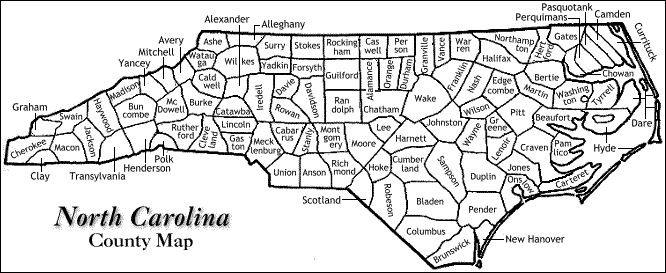
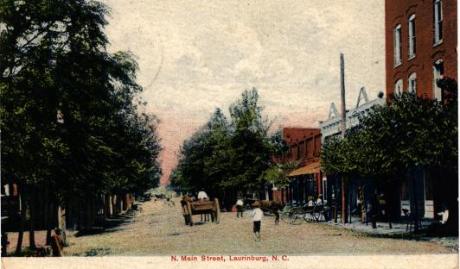
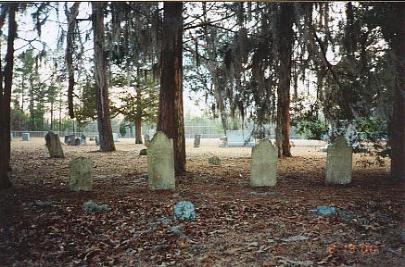
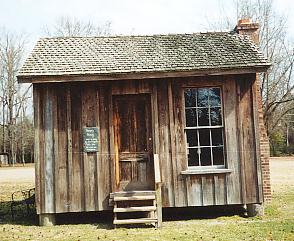
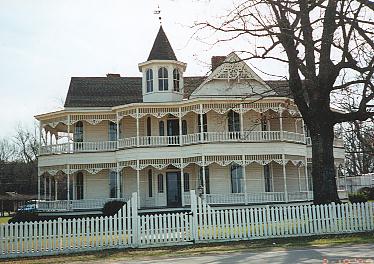
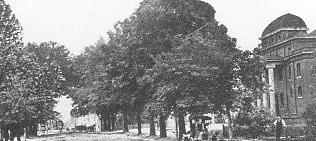




| The historic John Blue home, near Laurinburg, NC, sits on the land my 4-g-grandparents, Duncan and Katherine Carmichael McCormick, first settled when they arrived in America in 1791. Several years later, they sold their property to members of the Blue family and relocated a few miles away. |
| Every year a Cotton Festival is held on the grounds of the John Blue home, and several historic buildings have been moved from their previous locations in the county to the grounds for exhibit. At right is a pastor's study, used in the early 1800's. |
Main Street, Laurinburg, NC, early
1900's
1900's
| North Main Street, Laurinburg, NC, 1890 |
| Stewartsville Cemetery, Laurinburg, NC The graves of my 4-g-grandparents, Duncan and Katherine Carmichael McCormick Stewartsville Cemetery was named after Honorable James Stewart, the man who founded the Stewartsville homestead. Tradition says that a former Revolutionary soldier named Stewart, wounded in the war, was buried here about 1785. There was no cemetery in the vicinity and the funeral party stopped there to rest, when it was suggested that this quiet and pleasant place would be an ideal resting place for the deceased. All agreed and a grave was dug and marked. As the settlement grew, the number of graves increased and it became known as Stewartsville Cemetery. For over a hundred years, it was used as a burying place for people from the upper part of Richmond County, formerly Anson, Cumberland and Robeson Counties, and from over the state line in South Carolina. This was especially true of the early Scottish members of the community. From the History of Stewartsville Cemetery: "The people who made up the Stewarts of Appin Regiment in the uprising of 1745, the regiment which lost more men than any other Jacobite regiment in the Battle of Culloden, were McLaurins, Stewarts, Carmichaels, McInnises, McColls, McCormicks, Liningstons, and McElyeas. All these people more or less emigrated to North Carolina at the same time.....1770-1790, sailing directly to Wilmington." |
| The link to this page is: http://www.thepastwhispers.com/Richmond_County.html Scenes of Scotland & Richmond Counties, NC Whispers - Home |